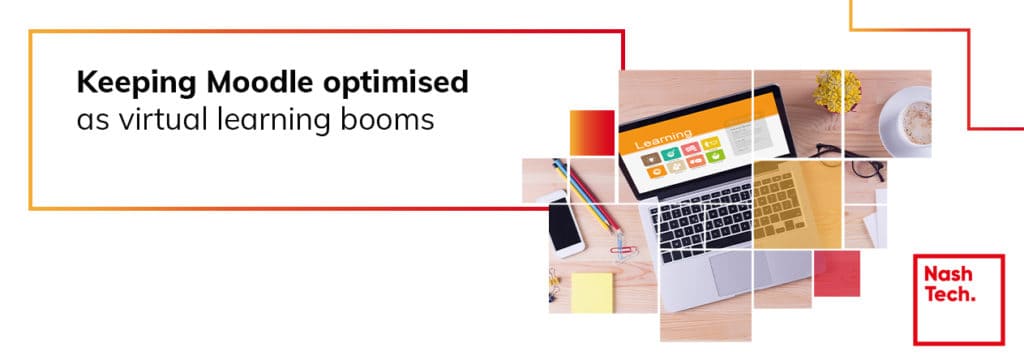Home / Our thinking / Insights / Benefits of moving student information systems to the cloud for higher education institutions
Benefits of moving student information systems to the cloud for higher education institutions

Table of contents
Higher education institutions have long been burdened by a patchwork of systems designed to manage various aspects of the student lifecycle. From admissions and financial aid to academic records and alumni relations, these disparate systems create information silos, hindering efficiency and impeding strategic decision-making.
The emergence of cloud-based SIS solutions offers a compelling alternative.
These intelligent, user-friendly platforms provide a consumer-like experience, empowering institutions to streamline operations, enhance their standing and improve student outcomes. This article delves into the transformative potential of cloud-based SIS, exploring the benefits, challenges and opportunities for higher education institutions.
Strategically transform your institution
The transition to a cloud-based SIS is not a monolithic overhaul. It's a strategic journey that can be undertaken in phases. By adopting a gradual approach, institutions can mitigate risks, optimise resource allocation and maximise the return on investment. This phased implementation allows continuous evaluation and adjustment, ensuring the system aligns with the institution’s evolving needs.
53% of schools worldwide use cloud-based student information systems for better data management.
A cloud-based SIS is more than just a technological upgrade; it's the cornerstone of a broader digital transformation. By centralising data, streamlining processes and empowering users, it enables institutions to achieve three critical objectives: operational excellence, enhanced institutional standing and improved student outcomes.
74% of teachers believe that cloud-based tools enhance collaboration among students.
Unlocking operational efficiency
The cloud's elasticity and scalability eliminate the need for costly on-premises infrastructure. By shifting IT resources from managing hardware to driving innovation, institutions can reduce operational expenses and accelerate decision-making. A unified platform streamlines processes across departments, from finance to human resources, fostering collaboration and ensuring data consistency. For example, by providing access to real-time data and analytics, cloud-based SIS can help institutions to make more informed decisions about everything from admissions to curriculum development.
Elevating institutional standing
Higher education institutions are enhancing their reputation, attracting top faculty and fostering groundbreaking research. It's about positioning the institution as a leader in higher education. A cloud-based SIS can be a powerful tool for achieving this. By providing a comprehensive view of student data, institutions can identify trends, personalise student experiences and demonstrate the impact of their programs. Additionally, the ability to integrate data from various sources, such as alumni networks and employer partnerships, enables institutions to build stronger relationships with external stakeholders.
Enhancing student success
Students today expect a seamless digital experience. A cloud-based SIS can deliver on this promise by providing students with easy access to their academic records, financial aid information and personalised support services, including flexible learning options, making higher education more accessible to a wider range of students. By leveraging AI and machine learning, institutions can find students at risk of academic difficulty and provide timely interventions.
By migrating The Open University’s virtual learning environment (VLE) to AWS, students now have real-time access to academic resources, support services, and flexible learning options. This new infrastructure allows for easy access to student records, financial aid details and personalised study plans—all from a single, intuitive platform. The streamlined experience supports students from diverse backgrounds, removing barriers to higher education and promoting academic success. Learn more about how NashTech can enhance your institution’s digital infrastructure!
Technical advantages: the cloud's powerhouse
Beyond its operational and strategic benefits, the cloud offers several essential technical advantages for modern higher education institutions. One characteristic of cloud computing is scalability. When your organisation expands, your SIS may easily grow to handle more work. Without the inconvenience of manual upgrades, automatic updates make sure you always have access to the newest features and security improvements. In higher education, security is paramount. Cloud providers make significant investments in cutting-edge security measures to safeguard your private information from online attacks that frees you from worrying about the intricacies of IT security so you can concentrate on your primary goal.
Gartner predicts organisations will spend nearly $6.69 billion on cloud security in 2023, rising almost 27% year-over-year.
 Maximising capabilities for the entire institution
Maximising capabilities for the entire institution
The successful implementation of a cloud-based SIS requires an integrated approach. It is about more than just migrating applications to the cloud; it is about transforming the way an institution works.
To maximise the benefits of a cloud-based SIS, institutions must prioritise data integration. A unified data repository enables data-driven decision-making, improves operational efficiency and enhances the student experience. User-friendly interfaces and intuitive workflows are also crucial for adoption and user satisfaction.
Furthermore, using AI and machine learning can unlock new insights and automate routine tasks. By harnessing these technologies, institutions can optimise resource allocation, predict student outcomes and personalise the learning experience. For example, AI can analyse vast amounts of data from student interactions and academic performance to uncover patterns that reveal insights into student behaviour and learning needs. It can automate routine tasks such as grading, scheduling and administrative workflows, freeing educators to focus more on teaching and mentoring. By leveraging Generative AI, it is possible to set up intelligent chatbots assisting future students with course selection. Generative AI, with its ability to create personalised content and adaptive learning pathways, could enhance the educational experience by tailoring resources and activities to individual learning styles and needs, thereby improving engagement and outcomes. All of this can be achieved using NashTech’s Generative AI accelerator, to speed up the development process of the solution and ensure highest security.
Partnering for success
The transition to a cloud-based SIS is not just about upgrading technology; it is about transforming your institution so choosing the right partner is crucial. NashTech offers a unique combination of deep industry ability and proven technical capabilities. Our team understands the challenges and opportunities facing higher education institutions, and we are committed to helping you achieve your goals.
Download this factsheet from NashTech that gives more in-depth advice on optimising your SIS, common pitfalls to avoid - and what qualities you should look for in a good development partner.
Suggested articles

Keeping Moodle optimised as virtual learning booms
The Covid-19 pandemic has hugely accelerated the growth of virtual learning, with higher education campuses up and down the country largely empty and...

Can technology save the international student crisis in Australia?
2018, Australia attracted almost 700,000 international students to its universities, making Australia, the United States, and the United Kingdom, the...
.jpg)
Strategic resilience in a cost-conscious climate: Key insights from NashTech and CAUDIT
The Australian higher education sector is under growing pressure from rising operational costs, skills shortages, and an ever-changing digital and AI...